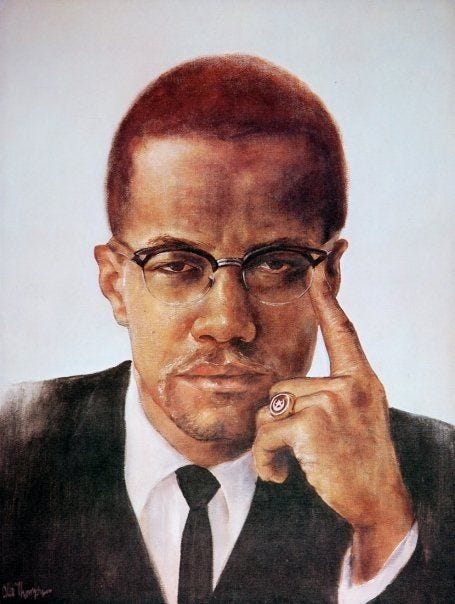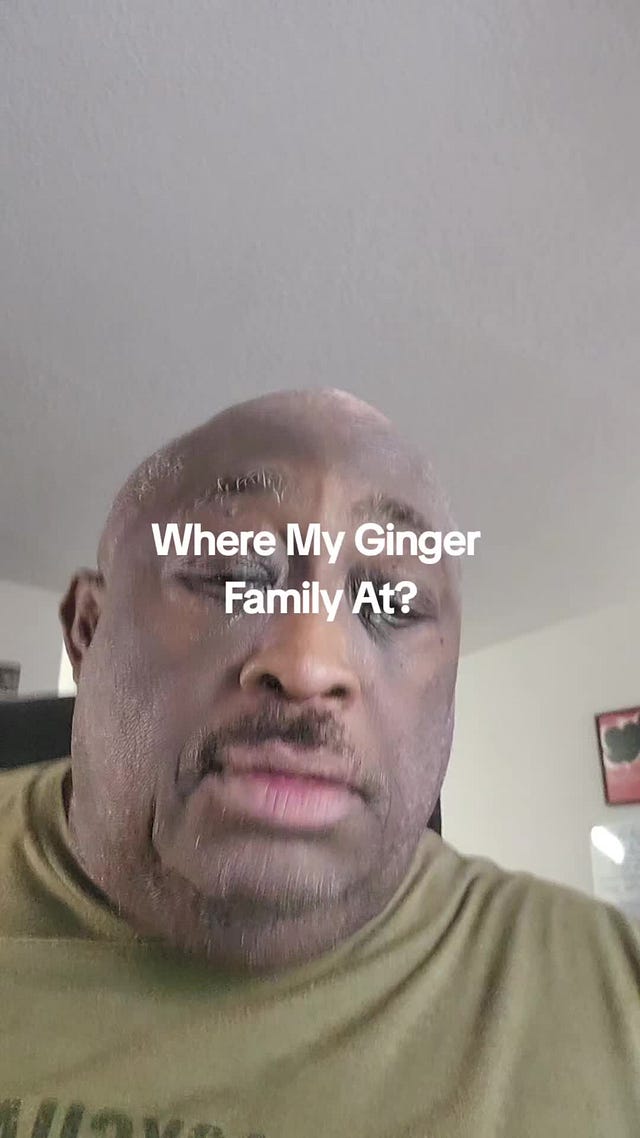179: Ginger is the New Black?
How TikTok solidarity is melting racecraft while white supremacy clings to power
What if race stopped working? What if one of the most enduring, violent, and exploitative myths of modern authority began to dissolve in front of our eyes—not because the powerful dismantled it, but because people laughed it out of existence?
That’s exactly what’s happening on TikTok, where a playful, defiant trend has seen Black creators declaring that ginger people—yes, the freckled, red-haired children of the Irish diaspora—are now officially Black.
At first glance, it’s funny, irreverent, even absurd. But behind the memes is a deeper current of solidarity and subversion that connects centuries of struggle, from the plantations of the American South to the streets of Belfast, from the Catholic ghettos of Boston to the algorithmically mixed feeds of TikTok.
 Tiktok failed to load.
Tiktok failed to load.Enable 3rd party cookies or use another browser
This moment is more than a joke—it’s a crack in the armor of what Karen and Barbara Fields famously called racecraft. In their seminal work Racecraft: The Soul of Inequality in American Life, the Fields sisters argue that race is not a biological fact but a kind of social sorcery—a conjuring trick used to rationalize exploitation, divide the working class, and obscure the real mechanics of inequality.
Race is not something we see, they write. It’s something we do. And the more we do it, the more it seems natural, inevitable, immutable.
But what happens when we stop doing it?
TikTok, with its chaotic, remixable, memetic culture, has become both a battlefield and a laboratory for this unraveling. In one moment, it amplifies white supremacist ideologies, feeding incel culture, tradwives, and the aesthetic of Christian nationalism. In the next, it stitches together trans kids, Afro-Caribbean grandmothers, Irish folk musicians, and Black radical TikTokers in unexpected alliances that confuse the old categories.
Digital culture is both post-racial and hyper-racialized. The algorithm doesn’t see race—but it profits from racial difference, outrage, and spectacle. And yet, creators have found ways to hack the system, using humor, solidarity, and historical memory to build bridges where the system would prefer walls.
Black and Irish: A Long History of Shared Struggle
The embrace of gingers as Black is more than irony. It gestures to a history that white supremacy has worked hard to bury: the alliances between Black Americans and Irish immigrants in the 19th and early 20th centuries, the solidarity between abolitionists and Irish independence activists, the shared experience of being deemed subhuman, criminal, and inferior by Anglo-Protestant elites.
Of course, these alliances were often undermined—by the lure of whiteness, by the privileges extended to Irish immigrants who turned away from solidarity with Black Americans in exchange for upward mobility. But that doesn’t erase the legacy of resistance that lingers under the surface, ready to be rediscovered.
What TikTok has done is revive that memory in the form of memes, jokes, and dances. It’s made a history lesson go viral, bypassing the gatekeepers of academia and media to create a new vernacular of defiance.
And yet, even as the category of race begins to lose its coherence—eroded by globalization, digital culture, and the defiant joy of communities refusing to be boxed in—white supremacy is not collapsing. It’s consolidating.
The Trump regime, powered by Christian nationalism, racial grievance, and the fantasy of a white ethno-state, comes to power precisely at the moment when race as a social technology is breaking down. This is not a coincidence.
As the tools of racecraft become more fragile, the forces of reaction cling to them harder, more desperately, more violently. Their insular digital spaces become echo chambers of paranoia, resentment, and conspiracism. They are trying to reboot racecraft by force.
But as TikTok shows us, the magic trick is failing. And the more people laugh at the absurdity of race, the harder it becomes to maintain its spell.
The Future of Solidarity is Fluid, Playful, and Memetic
What we are seeing is not the end of racism—but perhaps the beginning of the end of race as a useful instrument of elite power.
Solidarity today looks less like marches under banners, and more like viral trends, remix cultures, and playful subversions of authority. It’s messy, irreverent, and full of contradictions. And yet it points to a deeper truth that the Fields sisters knew all along: if race is something we do, we can also undo it.
Maybe, just maybe, people on TikTok are doing exactly that.






Now for the next trick ... How do we get people to ridicule the social construct of race, and the social hierarchy of racism, without focusing on individuals?
This is a systemic problem, and ridiculing individuals actually enforces and protects the silos rather than dismantling them.
I’ve been on this side of TikTok for a few days now. What an incredible experience. So much acceptance and so much love. ❤️ And oh my goodness, the healing! Thank you new cousins for beginning this TikTok trend. It feels as though it’s here to stay. I only wish my dad (and fellow ginger) were here to experience this! I just know he’s watching from the great beyond, with a sparkle in his eye, giving me a wink and saying “See? I told you it was the most magical trait of all.”